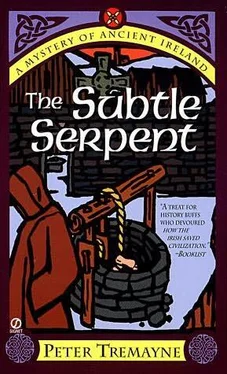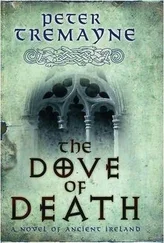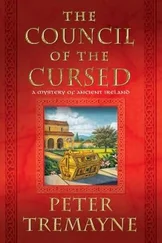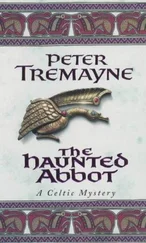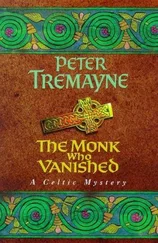Peter Tremayne - The Subtle Serpent
Здесь есть возможность читать онлайн «Peter Tremayne - The Subtle Serpent» весь текст электронной книги совершенно бесплатно (целиком полную версию без сокращений). В некоторых случаях можно слушать аудио, скачать через торрент в формате fb2 и присутствует краткое содержание. Жанр: Исторический детектив, на английском языке. Описание произведения, (предисловие) а так же отзывы посетителей доступны на портале библиотеки ЛибКат.
- Название:The Subtle Serpent
- Автор:
- Жанр:
- Год:неизвестен
- ISBN:нет данных
- Рейтинг книги:3 / 5. Голосов: 1
-
Избранное:Добавить в избранное
- Отзывы:
-
Ваша оценка:
- 60
- 1
- 2
- 3
- 4
- 5
The Subtle Serpent: краткое содержание, описание и аннотация
Предлагаем к чтению аннотацию, описание, краткое содержание или предисловие (зависит от того, что написал сам автор книги «The Subtle Serpent»). Если вы не нашли необходимую информацию о книге — напишите в комментариях, мы постараемся отыскать её.
The Subtle Serpent — читать онлайн бесплатно полную книгу (весь текст) целиком
Ниже представлен текст книги, разбитый по страницам. Система сохранения места последней прочитанной страницы, позволяет с удобством читать онлайн бесплатно книгу «The Subtle Serpent», без необходимости каждый раз заново искать на чём Вы остановились. Поставьте закладку, и сможете в любой момент перейти на страницу, на которой закончили чтение.
Интервал:
Закладка:
‘No, he is dead,’ Fidelma explained. ‘Adnár, the local chieftain, slew Torcán when he tried to kill me. Olcan the son of Gulban is also here, being held prisoner by Adnár as being a party to the insurrection.’
‘I see.’ Mail clearly meant that the events were beyond his comprehension.
‘You will see,’ smiled Fidelma with slight emphasis. ‘At least, I hope so, when I present the case before Beccan. I am now ready to do that.’
‘Very well,’ the elderly judge conceded. ‘We will assemble a court in the abbey buildings this afternoon. Draw up a list of all those you wish to be present, sister, and we will ensure their attendance.’
Chapter Nineteen
The duirthech, the wooden chapel of the abbey of The Salmon of the Three Wells, was chosen by Beccan as the place to hold the hearing. The abbess’s ornately carved oak chair had been placed before the altar, immediately in front of the tall gold cross. Beccan sat here. His personal scribe was seated on a stool to his right-hand side to take down the evidence which Fidelma would present. Fidelma herself sat on one of the front benches to the right of the chapel’s aisle with Eadulf alongside her. Ross sat as a spectator behind them together with Brother Cullin of Mullach. Behind them were seated Adnár and Brother Febal. Next to them sat the old farmer, Barr, whom Fidelma had summoned to the abbey. Then behind them, seated between two warriors of the Loigde, sat the dejected young Olcán.
On the benches on the opposite side of the aisle sat the self-assured Abbess Draigen with Sister Lerben and next to her Sister Comnat. Behind them was Sister Brónach and diffident Sister Berrach. The back benches of the chapel were crowded with as many of the community as had been able to squeeze into the building. At the door stood Mail and two more warriors.
Lanterns had been lit in the duirtlzech, their flickering light reflecting on the gold of the altar cross and the many icons and artifacts along the walls. They not only gave out a light but also a heat so that there had been no need to light the brazier in spite of the chill weather outside.
Beccan opened the proceedings by announcing that he satin judgment to hear the evidence gathered by Fidelma, as a dálaigh of the courts, into the causes of the death of two sisters of the community. He could, on the basis of the evidence she presented, consider whether there was a case to be answered by any she alleged to be the culprit or culprits. If so, they would be taken for trial to Cashel at a later date.
Having finished the formalities, Beccan indicated that Fidelma should begin.
She rose to her feet and uttered the ritual, ‘Pace tua’ meaning ‘with your permission’ but then was silent several moments, hands clasped together before her, head slightly forward as if contemplating something on the floor, while she gathered her thoughts.
‘I have rarely encountered such sadness housed in one place as it is in this abbey.’ Fidelma’s opening words echoed sharply in the confines of the building and caused a stir among the community at the back of the chapel. ‘There is much hatred in this place and that is not compatible with a house dedicated to the Faith. I found among this community living proof of the words of the psalm — that their mouths were as smooth as butter but their hearts were war, their words were smoother than oil, yet they were drawn swords.’
Abbess Draigen made to speak but the Brehon Beccan silenced her with a swift gesture.
‘This is now a court of law, not a chapel, and in this place I will say who shall speak,’ he admonished. ‘The dálaigh is making her opening remarks. Her words can be challenged at the proper time, as I shall indicate to you.’
Fidelma went on as if no interruption had been made.
‘Abbess Draigen called upon her superior in the Faith, Abbot Brocc of Ros Ailithir, and requested the presence of a dálaigh. A headless corpse had been discovered in the abbey’s main drinking well. There were certain things about this headless corpse that had a special significance. In the right hand was a crucifix and fastened on the left was an aspenwand carved in Ogham, in other words a fé , a measuring stick for the grave. The Ogham referred to the pagan goddess of death and battles, the Morrigu. The symbolism of this was, as I was informed by Sister Brónach, such as betokens someone who is a murderer or a suicide.
‘Some days later, the steward of the abbey, Sister Siomha, was likewise found decapitated, with the same symbolism. From the start, I was informed that the only person that had a motive was Abbess Draigen. I was told that she had a reputation for an attraction to young novices …’
This time Draigen rose to her feet and began to protest loudly but Beccan’s firm tone quelled her.
‘I have said that you will have a chance to answer later. Do not interrupt again otherwise it is in my power to exact a fine for such disregard of the rules of this court.’
As Abbess Draigen sat down abruptly, Fidelma continued with a cutting motion of her hand: ‘But there were many stories, mostly born out of malice or, as I have found, for other sinister purposes. Had Draigen been guilty of such misconduct she would have hardly asked Abbot Brocc to send a dálaigh to investigate matters. Yet the abbess has shown that she prefers the rule of Penitentials to our secular law. This was a mystery which intrigued me until I realised that the resolution was simple and one which she admits. The abbess sent to Brocc for a dálaigh simply because she did not want her brother, Adnár, who was local magistrate, to have any power in this abbey.’
The abbess glowered at her but made no response. Fidelma continued.
‘My first task was to identify the first headless corpse. It was that of a young girl whose thumb, index and little finger were stained with blue. That is typical of someone engaged in penmanship. When I found out that two sisters of the community, Sister Comnat the librarian, and Sister Almu, her young assistant, were missing from the abbey, I suspected that it might be the body of the latter. They had set offthree weeks before to the monastery of Ard Fhearta and not returned. To make a long story shorter, my suspicion eventually proved correct. This was the body of Almu.
‘Having discovered the identity of the corpse, the next question had to be the motive for the murder? Why and how had Sister Almu returned to this abbey? Why had she been decapitated after being slain? And what was the meaning of the pagan symbolism? From her corpse, there were only three other clues. She had been shackled before her death and there were some signs of ill-treatment. And there was brown red mud on her feet and under her fingernails. I was told by Sister Brónach that such mud was indicative of the copper rich land in this vicinity. Is this not true, Sister Brónach?’
The glum-faced sister started to rise in her seat. Then she inclined her head in silent agreement and sat back.
‘The death of Sister Síomha was even more intriguing and perplexing. Her body was found in the tower here, also decapitated and with the same symbols in her hands. This time the body had not been stripped of clothing. The murderer knew that we would know who she was or perhaps the murderer wanted us to know. Why the symbolism? Why the decapitation? But what intrigued me more than anything was the fact that the same brown red mud was under her fingernails. It had not been there the last time I had seen Sister Síomha just a few hours earlier.
‘There was blood smeared on the stairway from the tower into the subterraneus. It was Síomha’s blood. Her killer had severed the head in the tower and taken it down into the cave below. Why?
Читать дальшеИнтервал:
Закладка:
Похожие книги на «The Subtle Serpent»
Представляем Вашему вниманию похожие книги на «The Subtle Serpent» списком для выбора. Мы отобрали схожую по названию и смыслу литературу в надежде предоставить читателям больше вариантов отыскать новые, интересные, ещё непрочитанные произведения.
Обсуждение, отзывы о книге «The Subtle Serpent» и просто собственные мнения читателей. Оставьте ваши комментарии, напишите, что Вы думаете о произведении, его смысле или главных героях. Укажите что конкретно понравилось, а что нет, и почему Вы так считаете.
